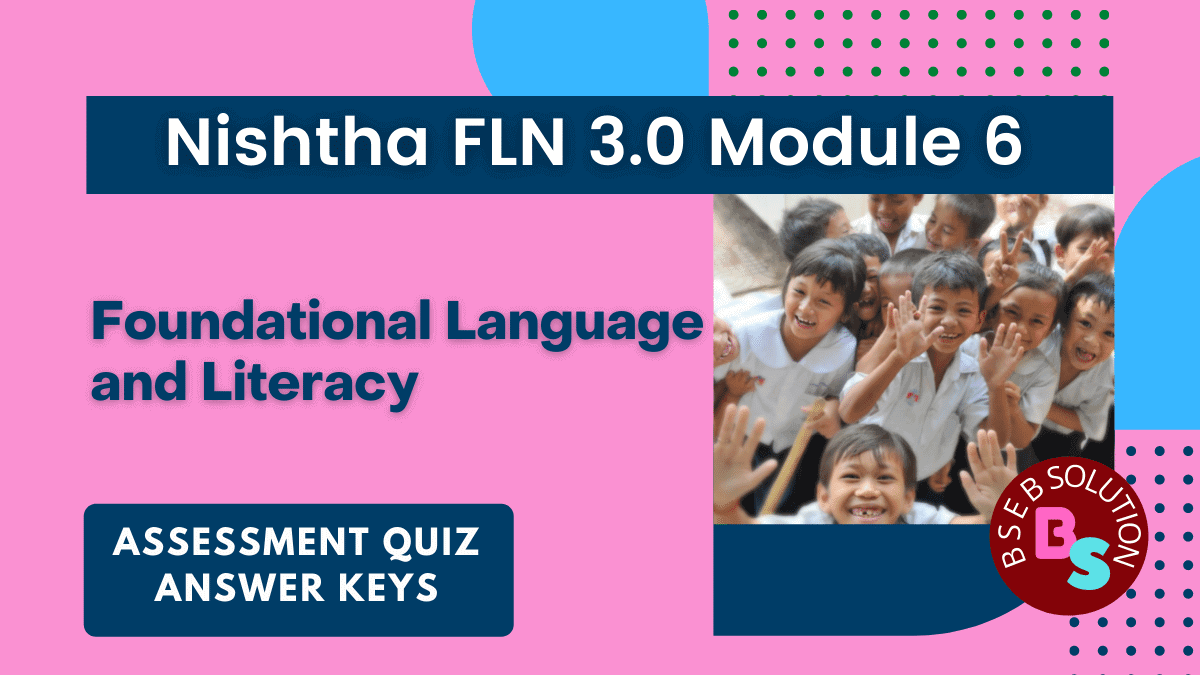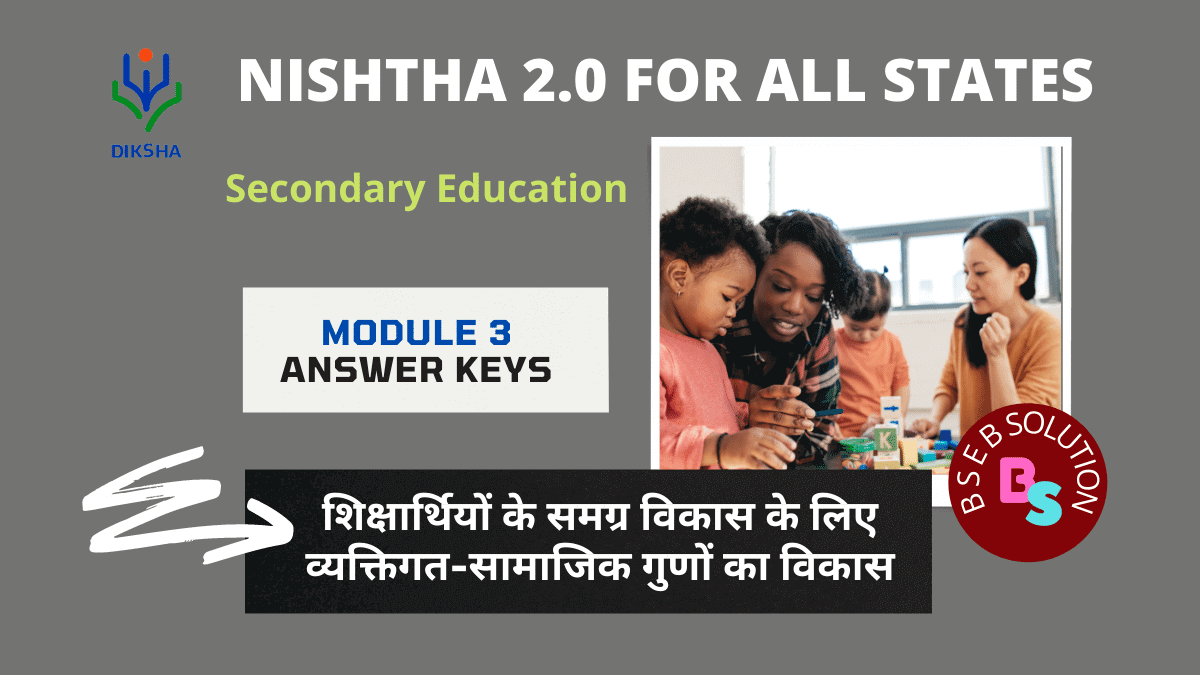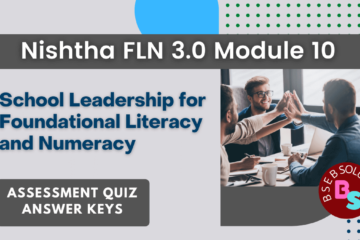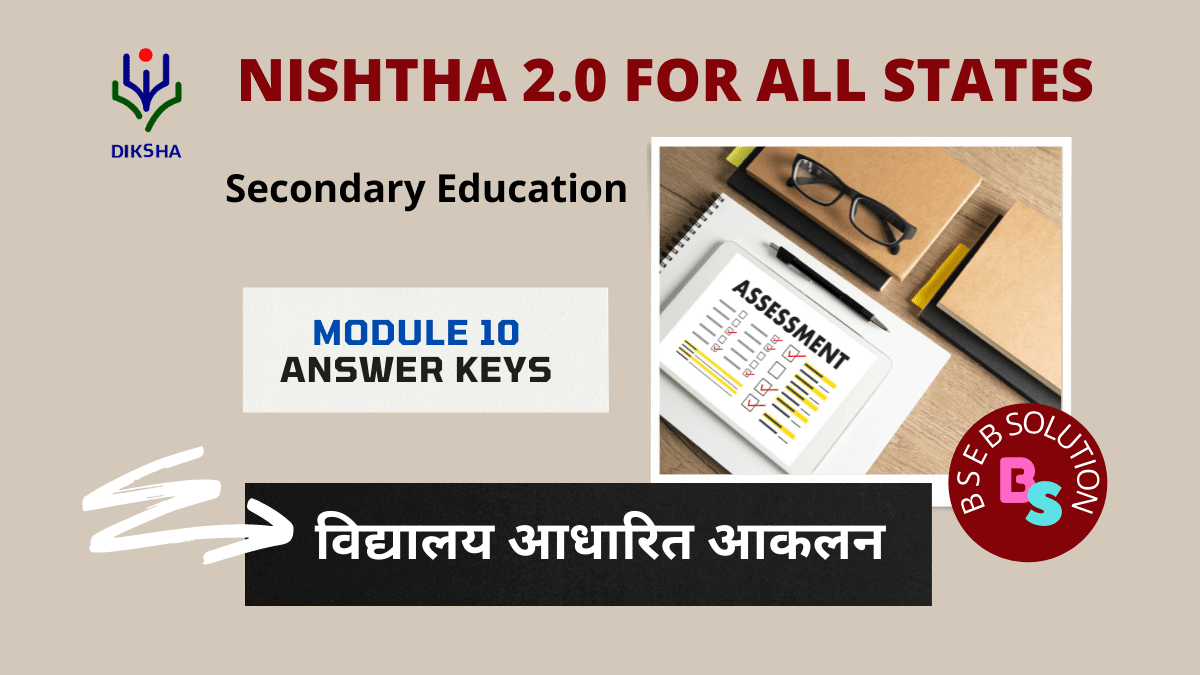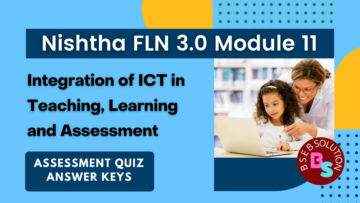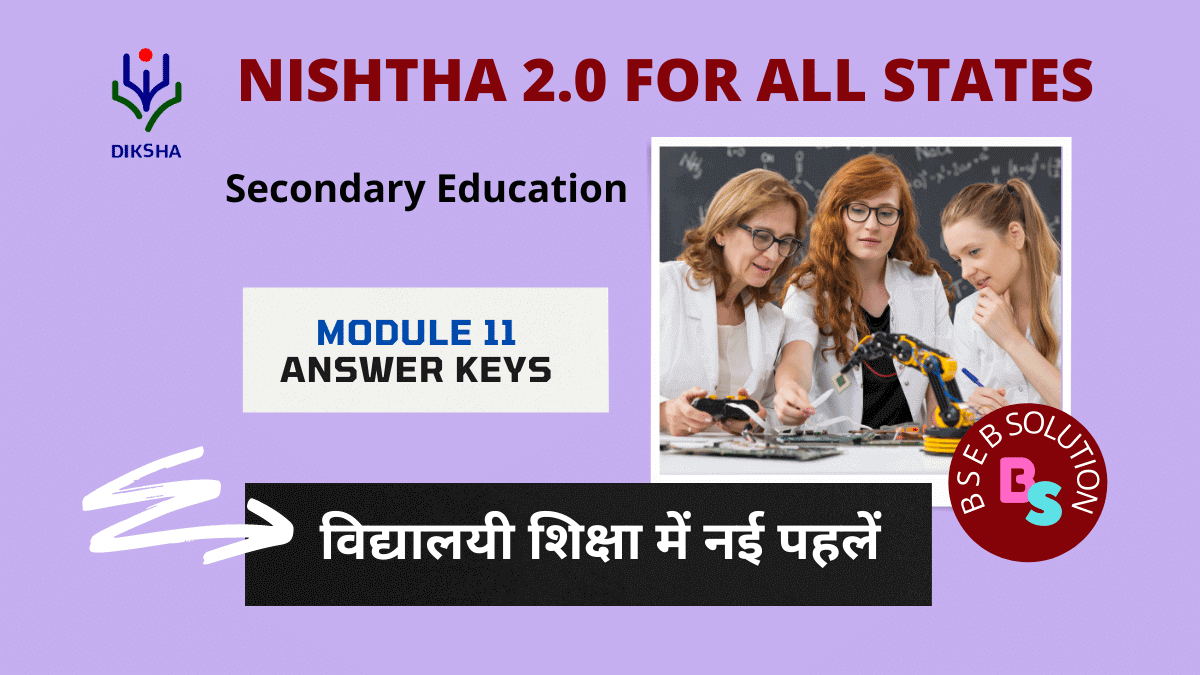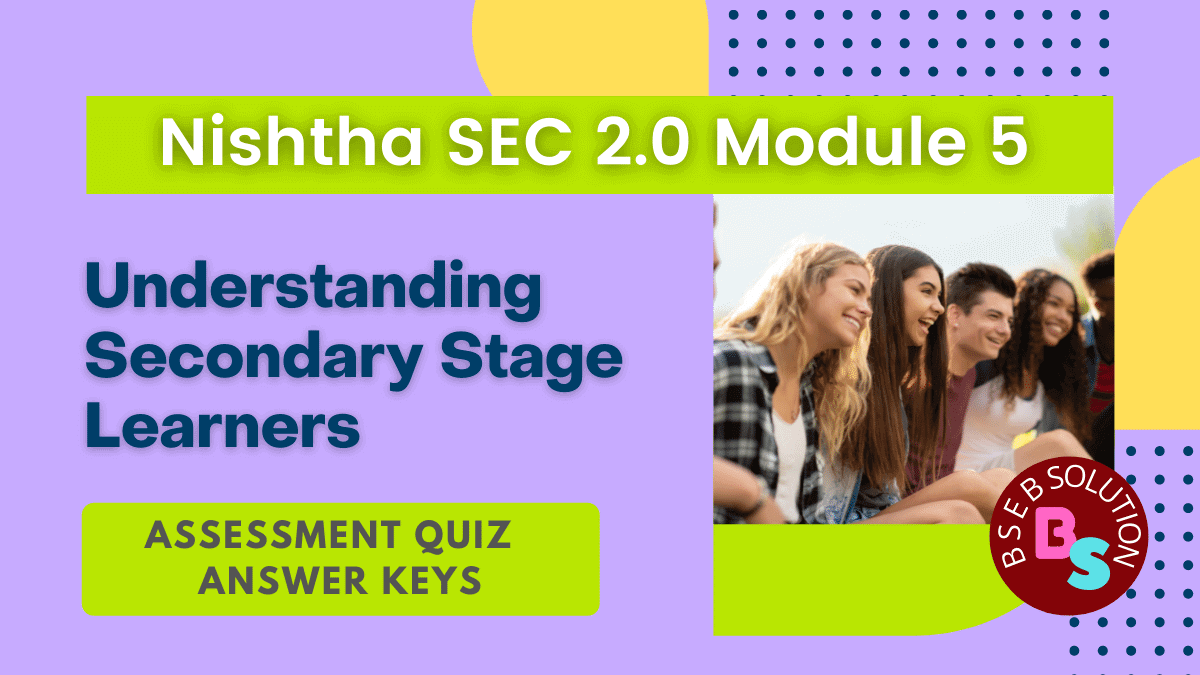The course on language and literacy will apprise learners about the aspects of the central question – how children learn to read and write and develop their language skills in social and academic contexts. In this post you will be able to know AR, UP, UK, MZ, NL, OD, PB, AP, AS, BH, GJ, HR, HP, JK, JH, KA, MP, CHD, CG, DL, GA, MH, CBSE, KVS, NVS, MN, ML, RJ, SK, TS, TR, Nishtha FLN 3.0 Module 6 Foundational Language and Literacy Quiz question and Answer Key PDF in English for Primary School Teachers of all states. यदि आप यह प्रश्नोत्तरी हिन्दी में पढ़ना चाहते हैं, तो यहाँ क्लिक करें |
Nishtha FLN 3.0 Module 6 “Foundational Language and Literacy” Answer Key
The assessment questionnaire of Nishtha 2.0 and 3.0 training is the same in all states, but the Training Links are different. Out of around 40 questions, you will get only 20 random questions in an attempt. You will be able to get the certificate by scoring 70% marks in maximum three attempts.
All the Nishtha trainings available on Diksha App are design to improve teacher performance. So, take all the training seriously and solve the assessment quiz at the end. Certificate will issued only after securing 70% marks in the evaluation quiz. If you face any kind of problem in solving Nishtha FLN 3.0 Module 6 “Foundational Language and Literacy” Quiz then get complete solution here.
Nishtha FLN 3.0 Module 6 Answer Key
Q. 1: The interesting phenomena is that languages are learnt in the __ way.
- critical
- boring
- productive
- same
Q. 2: The genres of literature, such as story, poem, rhymes, etc. helps a teacher to engage children in
- meaningful and relevant ways
- activities
- assessments
- the classroom
Q. 3: The ultimate goal of reading is
- to read loud and clear
- to extract meaning from the text
- to read clear
- to read with intonation
Q. 4: Literacy learning is
- a normal process acquired in school
- a complex developmental process
- a very difficult process
- an easy process to learn language
Q. 5: The activity of reading and writing
- occur separately
- are not linked to each other
- occur parallel to each other
- happens only inside the classroom
Q. 6: In a language classroom, open-ended instructions play an imperative role as
- it gives authority to the teacher to speak
- it gives autonomy to children to speak
- it allows children to expand their knowledge and experience
- it helps a teacher to assess children
Q. 7: The print-rich environment is essential for children as it enables
- peer assessment
- discussions in the classroom
- self-motivation to read with comprehension
- classroom to become attractive and colourful
Q. 8: Picture reading involves
- oral skills
- oral skills and thinking abilities
- thinking and decoding
- decoding
Q. 9: The reading material displayed in the classroom should be
- bought from the market
- at a height where children cannot touch them to keep them safe and intact
- at a height where children can touch and read them easily
- as many as possible
Q. 10: A teacher needs to introduce phonics to the students at
- the beginning of class
- after completing a month in their beginner grade
- the time when children are ready to learn the mechanical aspect of language
- their first language class
Q. 11: What is the silent period?
- no learning period
- period of silence
- period of self-negotiated learning
- period of no intake
Q. 12: Children understand and explore the nuances of
language when they
- listen quietly to their teacher
- participate in classroom discussions
- engage more and more with LSRW activities
- read aloud
Q. 13: Linguistic aspect of reading believes in the development of these skills
- grapho-phonemic awareness
- grapho-phonic awareness, semantic, syntax and pragmatics
- semantic, syntax and pragmatics understanding
- semantic and syntax understanding
Q. 14: Language plays a key role in shaping the____of the children about the world.
- ideology
- personality
- creative skill
- perception
Q. 15: Children’s magazines are a good way of possibilities for children
- to have fun with
- to learn reading
- to engage them with the print
- to learn decoding
Q. 16: Mother tongue helps children to become
- ignorant
- backward
- smart
- divergent thinker
Q. 17: Print rich environment of a classroom is described as
- a room with toys
- children’s literature, charts, children’s work, stories
- story book corner inside a classroom
- a room filled with lots of charts
Q. 18: Literacy learning is
- a normal process acquired in school
- a complex developmental process
- a very difficult process
- an easy process to learn language
Q. 19: What is the interregnum period in language learning?
- process of learning a second language
- development of thoughts
- development of a self-contained system of expressions
- beginning of the process of writing
Q. 20: The priority of a language classroom is
- to make the classroom beautiful.
- to create a print-rich environment for children
- to teach error free writing
- to teach decoding
Q. 21: Children who are multilingual have the advantage of being
- calm
- constructive and critical thinkers
- critical thinkers
- courageous
Q. 22: Context is important in language learning because it helps children to
- rote memorise
- grasp the meaning of the particular word
- decode and read
- formulate their stories
Q. 23: Language conveys meaningful messages if it is in
- clear
- formal
- context
- mother tongue
Q. 24: The cognitive aspect of language focuses on
- meaning making
- development of brain cells
- mindful reading
- mental process and strategies
Q. 25: A child’s language is not just a medium of learning but also an expression of thoughts, and innovation.
- opinion
- judgment
- creativity
- ideas
Q. 26: For the holistic development of children a teacher needs to design activities by integrating…..
- speaking and writing skills
- reading and writing skills
- reading and listening skills
- LSRW
Q. 27: What is guided reading?
- when most instructions are given by the teacher
- when fewer instructions are given by the teacher
- when no instruction is given by the teacher
- when less help is given by the teacher
Q. 28: What is shared reading?
- when no help is given by the teacher
- fast reading
- slow reading
- when most help is given by the teacher
Q. 29: In a language classroom, a teacher uses picture talk because
- it is a good fun activity for children to learn about pictures
- it helps in the identification of various objects
- it’s an important step in reading with meaning text
- it’s a good activity to prevent children from making noise
Q. 30: To engage children with the text a teacher should
- read aloud the text with children
- bring familiar context related to their daily life
- give children the text to read silently
- read aloud the text in the classroom
Q. 31: What is independent reading?
- when most of the instructions given by the teacher
- when most of the help provided by the teacher
- when minimal support given by peer
- when minimal support is given by the teacher
Q. 32:An active learner
- is the monitor of the class
- reads silently in class
- participates in classroom activities
- is a naughty child of the class
Q. 33: A teacher must provide ample opportunity to children for in the language classroom.
- self-expression
- read aloud
- write
- play
Q. 34: Mother tongue is
- first language a child learns at school
- first language acquired by the child
- hindi language
- the language child uses in school
Q. 35: Reading as a skill requires
- phonemic awareness and prediction
- previous knowledge/experiences
- phonemic awareness, previous knowledge and prediction
- prediction and previous knowledge
Q. 36: Reading essentially is a process of….
- decoding
- intonation
- meaning making
- pronunciation
Q. 37: For better learning opportunities a teacher must provide
- continuous evaluation
- read aloud sessions
- more books
- freedom to children for exploration
Q. 38: Children who receive meaningful foundational literacy and numeracy skills are/have
- better grades
- good speakers
- average learners
- better learning levels across grades
Q. 39: Children at the foundational years of literacy are
- shy
- passive
- over enthusiastic
- keen to explore the world around them
Q. 40: The process of writing happens parallel to reading because
- it is boring
- both are inter-connected
- it cannot happen in isolation
- both are separate
We hope that you have found the answer key for Nishtha 3.0 FLN Module 6 “Foundational Language and Literacy” Quiz, which helped you. Read the solutions of the quiz for modules other than “Foundational Language and Literacy” Nishtha FLN Module 6 answer key by clicking the button below.
Get here the link of training for all English medium state boards available on Diksha App. In this table you will know the list of all the latest training and the last date of the training course.
If you have any suggestions regarding Nishtha FLN 3.0 Module 6 “Foundational Language and Literacy” Answer , please send to us as your suggestions are very important to us..

